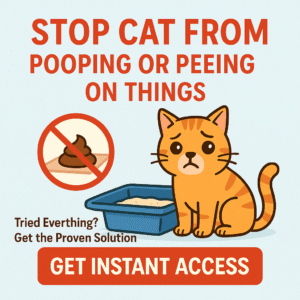Finding cat urine on your carpet is a common, yet deeply frustrating issue. The smell can permeate fabrics, linger for months, and attract repeat accidents. But don’t worry — this guide will walk you through everything you need to know to get cat pee out of carpet completely.
Why Cat Pee Is a Carpet Cleaning Challenge
Cat urine contains uric acid, which forms microscopic crystals that embed deep in carpet fibers and even into the pad or subfloor. Standard cleaning often fails because it masks the odor without removing the source. That’s why cats revisit those spots unless the uric acid is fully eliminated.
Prompt cleaning is key. The faster you act, the easier it is to avoid deep penetration into carpet padding or subflooring ({{cite_START}}turn0news22{{cite_DELIMITER}}turn0search3{{cite_END}}).
Step 1: Spot Accidents Immediately
As soon as you catch your cat in the act, blot fresh urine with white paper towels or cloths. Press firmly — don’t rub — to absorb liquid without spreading the stain ({{cite_START}}turn0news22{{cite_DELIMITER}}turn0search3{{cite_END}}).
Step 2: Pre‑Treat with Enzymatic Cleaner
Enzymatic cleaners are essential. They work by breaking down uric acid crystals and protein residues. Look for brands like Rocco & Roxie, Nature’s Miracle, or Angry Orange ({{cite_START}}turn0search3{{cite_DELIMITER}}turn0search10{{cite_END}}).
**How to apply:**
- Soak the affected area generously with enzyme cleaner.
- Cover with a damp towel or plastic wrap to keep it activated.
- Let sit for 2–12 hours (overnight is best).
Cats can detect lingering odors long after your nose can’t ({{cite_START}}turn0search10{{cite_END}}).
Step 3: Rinse and Extract with Water
After the enzyme treatment, rinse the area using plain water and extract excess with towels or a wet/dry vacuum. Some homeowners even flood the area with a carpet machine filled with warm water before extraction ({{cite_START}}turn0search8{{cite_END}}).
Be sure to remove as much moisture as possible — damp padding leads to mold or mildew.
Step 4: Deep Clean with Carpet Cleaner Machine
Using a carpet cleaner adds a powerful rinse-and-extract step. For example, Bissell Little Green machines are ideal for spot treatment and strongly recommended in expert guides ({{cite_START}}turn0search3{{cite_DELIMITER}}turn0search13{{cite_END}}). Fill the machine with water (or enzyme solution, based on instructions), clean the area, then rinse with plain water and extract thoroughly.
Step 5: Use Baking Soda or Oxygen Cleaner
Once mostly dry, apply baking soda to absorb residual moisture and odors. Let sit for several hours, then vacuum ({{cite_START}}turn0search2{{cite_DELIMITER}}turn0search10{{cite_END}}). Alternatively, oxygen cleaners (like OxiClean) can help tidy up stains after enzyme treatments ({{cite_START}}turn0search3{{cite_DELIMITER}}turn0news33{{cite_END}}).
Step 6: Rinse & Re‑treat if Needed
Use a vinegar-water rinse (50/50 solution) in your carpet cleaner or by hand to neutralize remaining chemicals ({{cite_START}}turn0search8{{cite_DELIMITER}}turn0search12{{cite_END}}). Finally, allow the area to dry thoroughly — up to 24 hours — using fans or open windows ({{cite_START}}turn0search5{{cite_DELIMITER}}turn0search3{{cite_DELIMITER}}turn0search13{{cite_END}}).
Step 7: Verify with Black Light
Urine isn’t always visible — use a UV or black light to check for hidden spots after cleaning. Lit areas glow yellow‑green if traces remain, requiring additional treatment ({{cite_START}}turn0search5{{cite_END}}).
Alternative Natural Cleaners
If you’d prefer DIY alternatives, consider these four natural options:
- Vinegar + baking soda: Blot, apply vinegar-water, blot, then add baking soda and vacuum ({{cite_START}}turn0search2{{cite_DELIMITER}}turn0search12{{cite_END}}).
- Vinegar + peroxide + dish soap: Mix hydrogen peroxide, vinegar, baking soda, and a dab of soap. Test first as peroxide can bleach fabrics ({{cite_START}}turn0search5{{cite_DELIMITER}}turn0search12{{cite_END}}).
- Vodka: Use a 50/50 vodka-water spray — disinfects and deodorizes, but may affect wood trims ({{cite_START}}turn0search12{{cite_END}}).
- Rosemary soap spray: Vinegar, castile soap, rosemary essential oil — deters re-marking ({{cite_START}}turn0search10{{cite_END}}).
Why Professionals Recommend Enzymes First
Enzymes digest uric acid at the molecular level, ensuring there’s no trace for cats to detect. All other cleaners only mask or lift pigment — not eliminate odor-causing residues ({{cite_START}}turn0search10{{cite_DELIMITER}}turn0news22{{cite_END}}).
When You Need Professional Cleaning or Replacement
If stains penetrate padding or subfloor, even thorough DIY methods may fail. In such cases:
- Use professional steam cleaning with enzyme-grade products
- Remove and replace padding — or even carpet — if deeply contaminated ({{cite_START}}turn0search0{{cite_DELIMITER}}turn0search3{{cite_END}})
Prevent Future Accidents
- Ensure litter box is clean, accessible, and multiple if you have more than one cat ({{cite_START}}turn0search2{{cite_END}})
- Minimize stress — stable routine, pheromone diffusers, hiding spots
- Retrain using positive reinforcement, and place clean boxes where accidents happen
- Use enzyme cleaner on any accident immediately to prevent re-marking
Address Marking Behavior, Not Just Cleaning
If your cat is repeatedly peeing on the carpet, you’re likely dealing with behavior issues — stress, marking, anxiety. Cleaning won’t solve the root cause. That’s where the Cat Spray No More eBook comes in.
This expert program offers:
- In-depth analysis of triggers and behavior cues
- Step-by-step retraining techniques
- Home setup guides to prevent relapse
- Real success stories to follow
Click here to get Cat Spray No More and transform your cat’s cleaning routine into permanent success.
Quick Reference Table: Cleaning Steps
| Step | Action | Purpose |
|---|---|---|
| 1 | Blot fresh urine | Remove moisture, prevent spread |
| 2 | Apply enzyme cleaner + cover | Break down uric acid |
| 3 | Rinse & extract | Remove cleaner and residues |
| 4 | Machine shampoo | Deep clean and rinse |
| 5 | Apply baking soda/oxygen cleaner | Absorb/remedy odors |
| 6 | Rinse with vinegar-water | Neutralize residues |
| 7 | Dry fully, use black light | Ensure no residue remains |
Conclusion
Successfully removing cat urine from carpet means going deeper than surface cleaning. Enzymatic treatment is non-negotiable—it addresses the root of the odor. DIY steps add support, but enzyme cleaners are the key to preventing relapse.
If accidents persist, you’re facing a behavioral issue. Use cleaning to prepare the environment—and use Cat Spray No More to finally stop the pattern and restore peace in your home.
